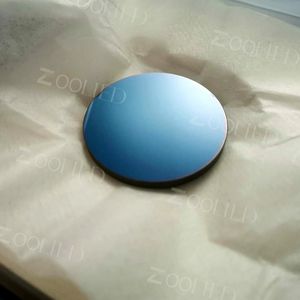
- Products
- Catalogs
- News & Trends
- Exhibitions
Silicon optical window ZLY196roundinfrared




Add to favorites
Compare this product
Characteristics
- Options
- infrared, round, silicon
Description
Si Crytal Lens and windows are often used for NIR and MWIR thermal imaging applications. Though the image quality may not be as superior as germanium and zinc selenide, silicon does provide a more lightweight and cost effective solution.
Laser Mirrors
Due to silicon’s high thermal capacity it is an ideal substrate for reflectors used in applications such as CO2 laser cutters.
FTIR Spectroscopy
Zoolied's big Silicon Windows are often used as the substrate for infrared Optical Filters that are incorporated into FTIR spectrometers.
IR Detectors
Silicon optics are often used in NIR and MWIR detectors due to its transmission from 1 to 6µm. Silicon based detectors are used in applications such as LiDAR and muzzle flash detection.
Zoolied Silicon (Si) Windows manufactured from optical grade silicon are popular for the 1.2 - 7μm spectral region due to their low cost and low density. Due to its low density (half that of germanium or zinc selenide), silicon is ideal for weight sensitive applications, especially those in the 3 - 5μm region. Density is 2.329 g/cm3 and Knoop Hardness is 1150, making it harder and less brittle than germanium.
Si crytal lens and windows manufactured from optical grade silicon are popular for the 1.2 - 7μm spectral region due to their low cost and low density(half that of germanium or zinc selenide),big Silicon windows are ideal for weight sensitive applications, especially those in the 3 - 5μm region. Density is 2.329 g/cm3 and Knoop Hardness is 1150, making it harder and less brittle than germanium
Related Searches
- Optical filter
- Glass lens element
- Optical prism
- Spectrum lens element
- Colored optical filter
- Optical window
- Glass optical prism
- Round mirror
- Visible lens element
- Optical lens element
- Glass mirror
- BK7 lens element
- Convex array lens element
- UV lens element
- Silica lens element
- Laser lens element
- Crystal lens element
- Beamsplitter
- Spherical lens element
- BK7 optical prism
*Prices are pre-tax. They exclude delivery charges and customs duties and do not include additional charges for installation or activation options. Prices are indicative only and may vary by country, with changes to the cost of raw materials and exchange rates.




